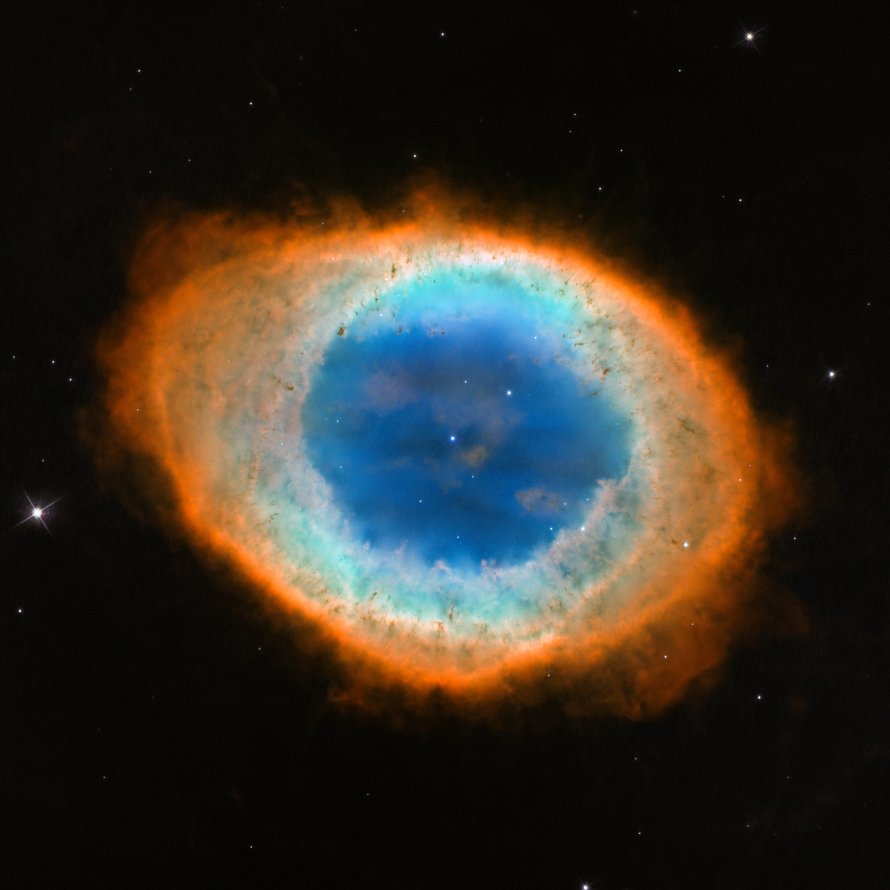M57 (NGC 6720) - Ring Nebula
Messier 57 (NGC 6720), also known as the Ring Nebula, is a planetary nebula located in the constellation Lyra, in the Orion Arm of the Milky Way Galaxy in the Local Group of galaxies. M57 is 2500 light years away from Earth.
M57 is best viewed during early spring, is magnitude 8.8, and can be viewed with binoculars. M57 is 1.5' x 1' in apparent size. For reference, the full moon is 30'.
Observing difficulty: Easy
- Name:
- Ring Nebula
- Type:
- planetary nebula
- Constellation:
- Lyra
- NGC or IC:
- NGC 6720
- Magnitude:
- 8.8
- Viewing:
- binoculars
- Size:
- 1.5' x 1'
- Distance (light years):
- 2500 LY
- RA:
- 18h 53.6m
- Dec:
- 33 2'
- Season:
- early spring
- Milky Way location:
- Orion Arm
- Galaxy group:
- Local Group
- Messier Marathon #:
- 71
* The naked eye can see up to magnitude ~7-8 objects under ideal dark sky conditions.
The Celestial Smoke Ring of Lyra
Renowned as the Ring Nebula, Messier 57 (M57) is one of the most iconic and best-studied objects in the night sky. It is a planetary nebula, a cosmic structure of ionized gas expelled by a dying, sun-like star. Located in the constellation of Lyra, it is a popular target for amateur astronomers and a fascinating subject for professionals.
Historical Context
The French astronomer Antoine Darquier de Pellepoix was the first to record Messier 57 in January 1779, describing it as "a very dull nebula, but perfectly outlined; as large as Jupiter and looks like a fading planet". Charles Messier independently rediscovered and catalogued it shortly after, intrigued by its peculiar ring-like appearance.
Physical Characteristics
Messier 57 is an example of a planetary nebula, the remnants of a medium-sized star similar to our Sun. As the star ages and exhausts its nuclear fuel, it sheds its outer layers, leaving behind a hot, compact core known as a white dwarf. The intense ultraviolet radiation from the white dwarf ionizes the surrounding gas, causing it to shine and create the nebula. The nebula's ring-like appearance is a result of our line of sight aligning with its relatively thin, hollow shell structure.
Magnitude and Size
Messier 57 has an apparent magnitude of 8.8, placing it beyond naked-eye visibility but within reach of a small telescope or binoculars. Its diameter is approximately 1 arcminute, equivalent to the apparent size of Jupiter at its closest approach to Earth. However, it appears smaller than Jupiter due to its faintness and diffuse structure.
Scientific Significance
The Ring Nebula holds scientific significance as it provides a glimpse of the future of our own Solar System. In about 5 billion years, our Sun will exhaust its nuclear fuel and cast off its outer layers, possibly forming a similar nebula. Studying Messier 57 can thus offer insights into the ultimate fate of our home star.
Finding and Viewing Messier 57
Messier 57 lies between the Beta and Gamma stars of the constellation Lyra, often visualized as the base of a parallelogram pattern formed by the brightest stars in Lyra. Given its apparent magnitude of 8.8, Messier 57 is best viewed under dark skies. While not visible to the naked eye, it is readily observable through a small telescope or even binoculars.
While its ring-like structure may not be evident in small binoculars, a telescope with an aperture of at least 4 inches and a moderate magnification can begin to reveal its distinct shape. Larger telescopes under high magnification can showcase more detail, and the nebula may appear as a delicate, smoke-ring-like structure surrounding a faint central star.



